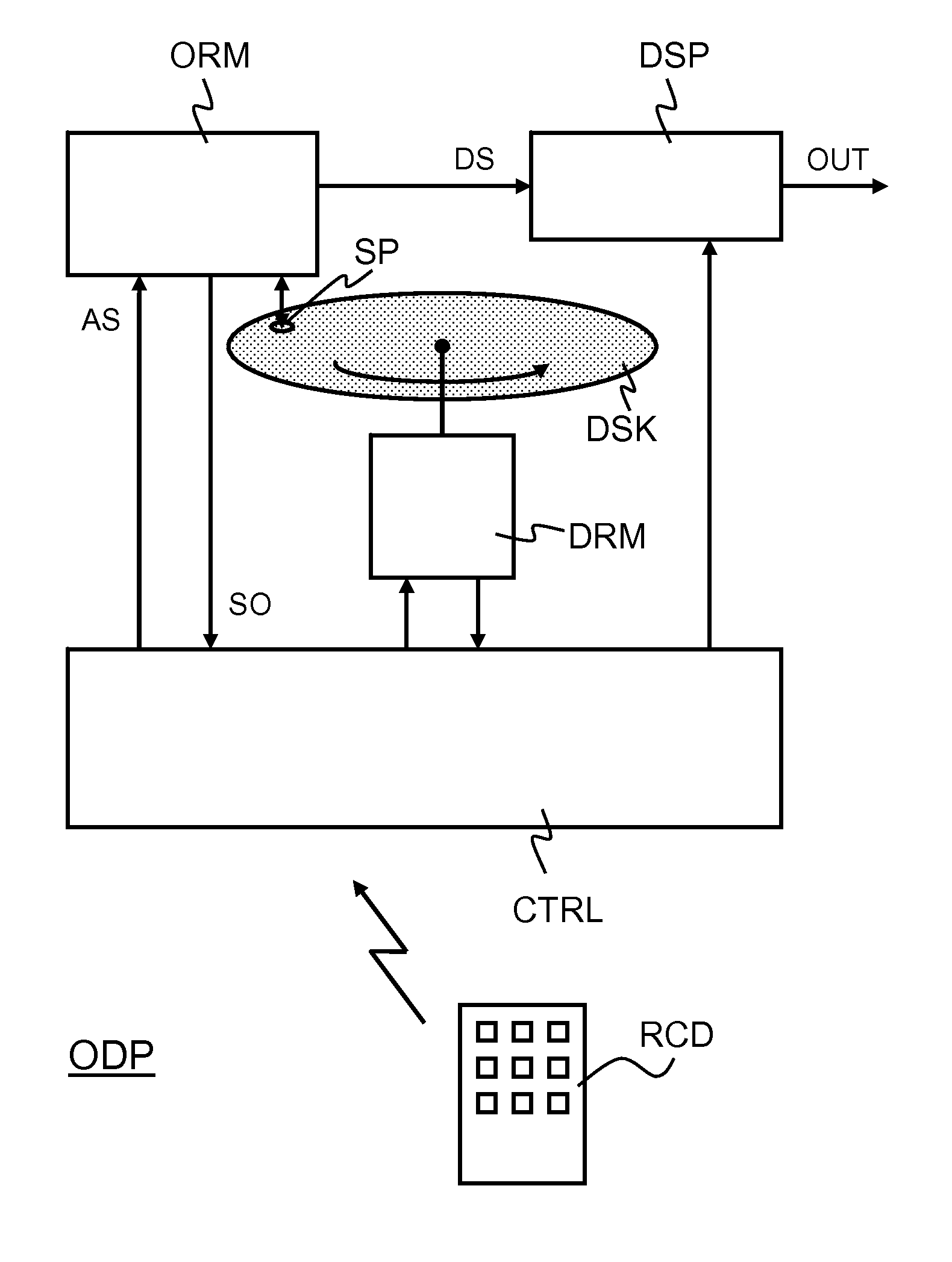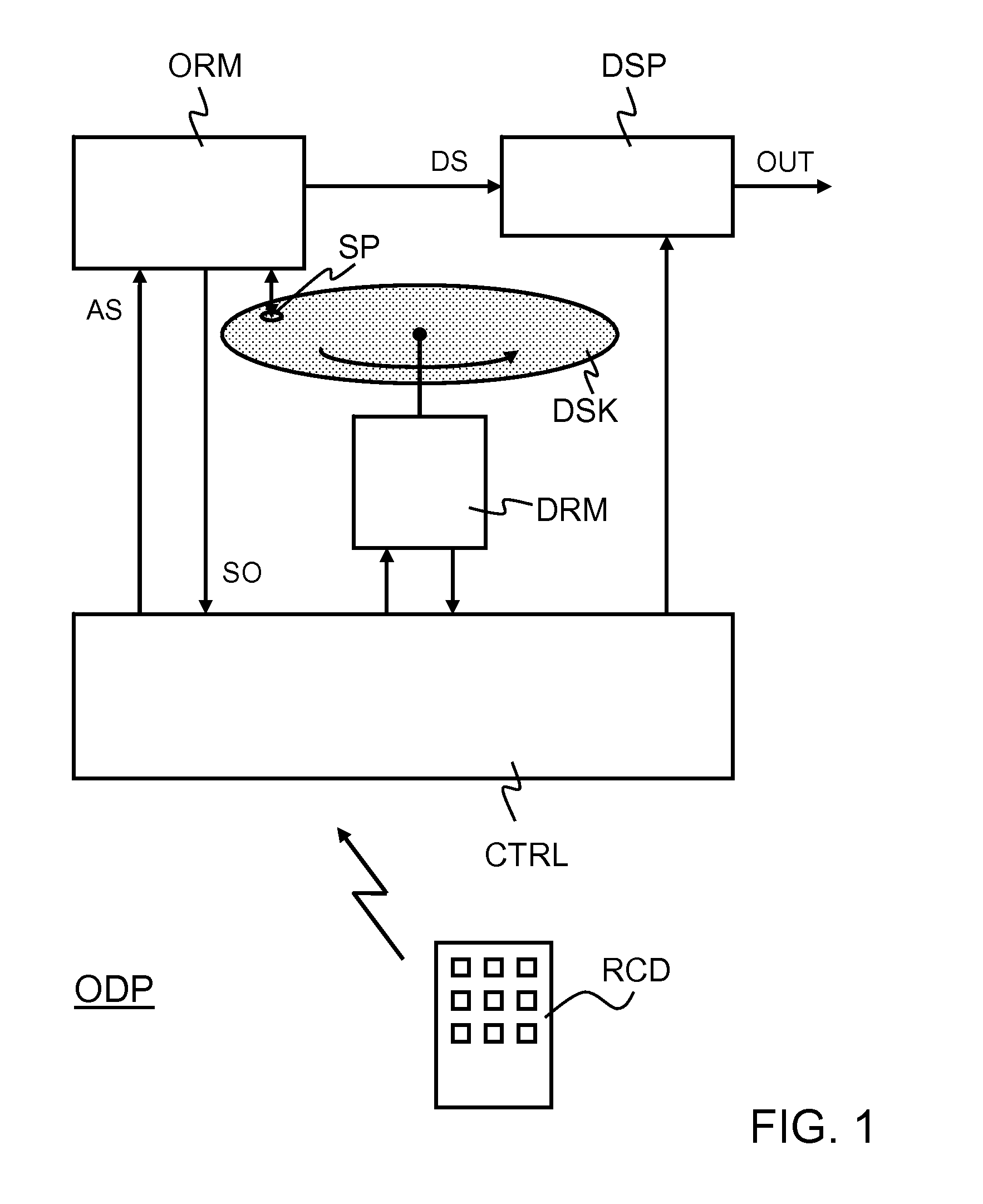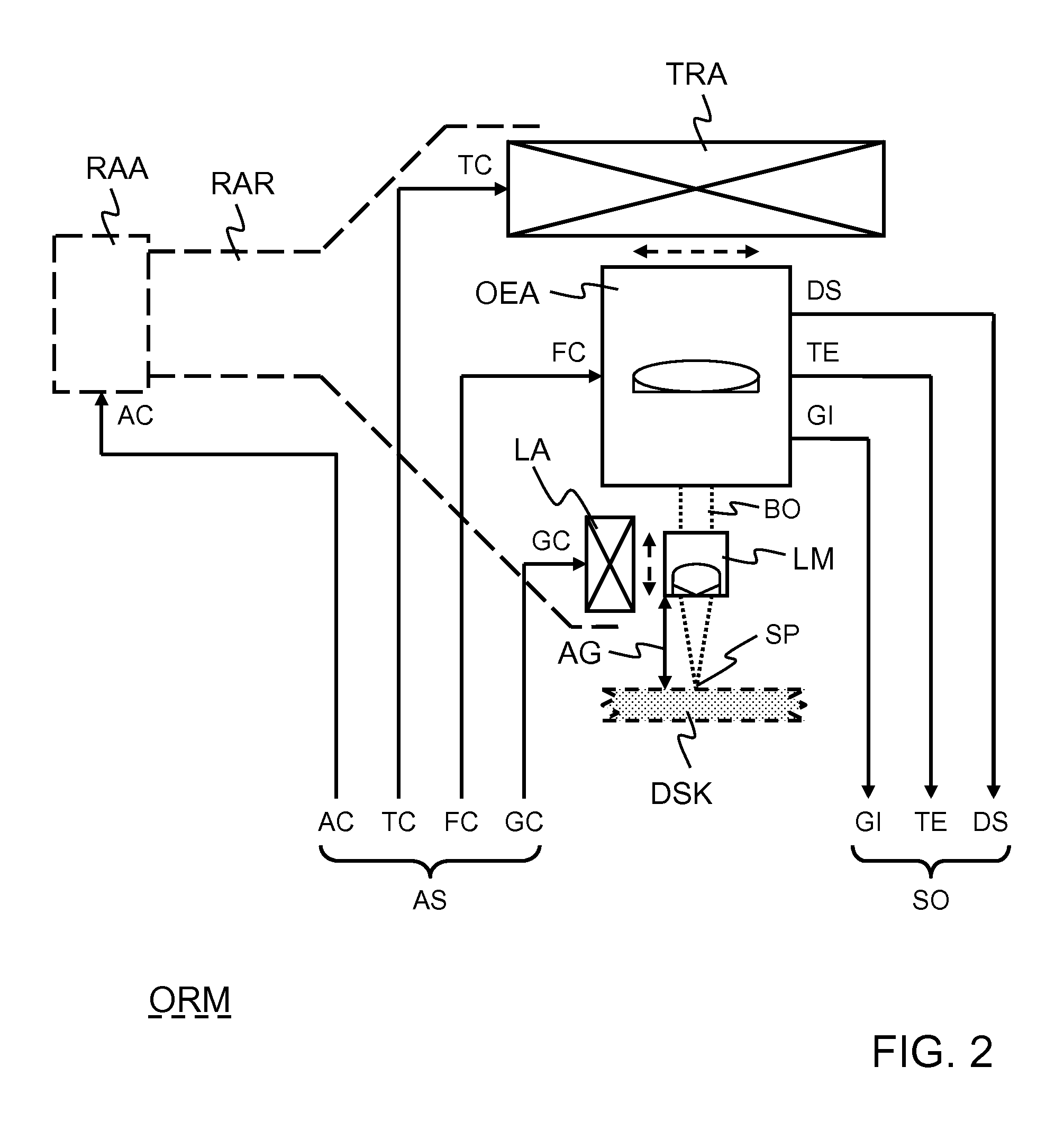Optical storage interface apparatus, method of controlling an optical storage interface
a technology of optical storage interface and optical information carrier, which is applied in the direction of optical recording head, instruments, data recording, etc., can solve the problems of adversely affecting data reading and writing, damage to optical information carrier, and lens module damage, so as to reduce the risk of collision, and reduce the distance between the lens module and the optical information carrier.
- Summary
- Abstract
- Description
- Claims
- Application Information
AI Technical Summary
Benefits of technology
Problems solved by technology
Method used
Image
Examples
Embodiment Construction
[0026]FIG. 1 illustrates an optical disk player ODP that is capable of reading an optical disk DSK, which comprises a relatively high density of data. The optical disk player ODP comprises an optical reader module ORM, a data signal processor DSP, a disk-rotation motor DRM, and a controller CTRL. The optical disk player ODP may further comprise a remote control device RCD. The controller CTRL may be in the form of, for example, a programmable processor that comprises a program memory. In that case, one or more software modules, which are stored in the program memory, define operations which the controller CTRL carries out.
[0027]The optical disk player ODP basically operates as follows. Let it be assumed that a user presses a play button on the remote control device RCD. The remote control device RCD sends a wireless signal to the controller CTRL. The controller CTRL interprets this wireless signal as a play command and, in response, causes the disk-rotation motor DRM to make the opt...
PUM
| Property | Measurement | Unit |
|---|---|---|
| wavelength | aaaaa | aaaaa |
| wavelength | aaaaa | aaaaa |
| near-field threshold value THN | aaaaa | aaaaa |
Abstract
Description
Claims
Application Information
 Login to View More
Login to View More - R&D
- Intellectual Property
- Life Sciences
- Materials
- Tech Scout
- Unparalleled Data Quality
- Higher Quality Content
- 60% Fewer Hallucinations
Browse by: Latest US Patents, China's latest patents, Technical Efficacy Thesaurus, Application Domain, Technology Topic, Popular Technical Reports.
© 2025 PatSnap. All rights reserved.Legal|Privacy policy|Modern Slavery Act Transparency Statement|Sitemap|About US| Contact US: help@patsnap.com



